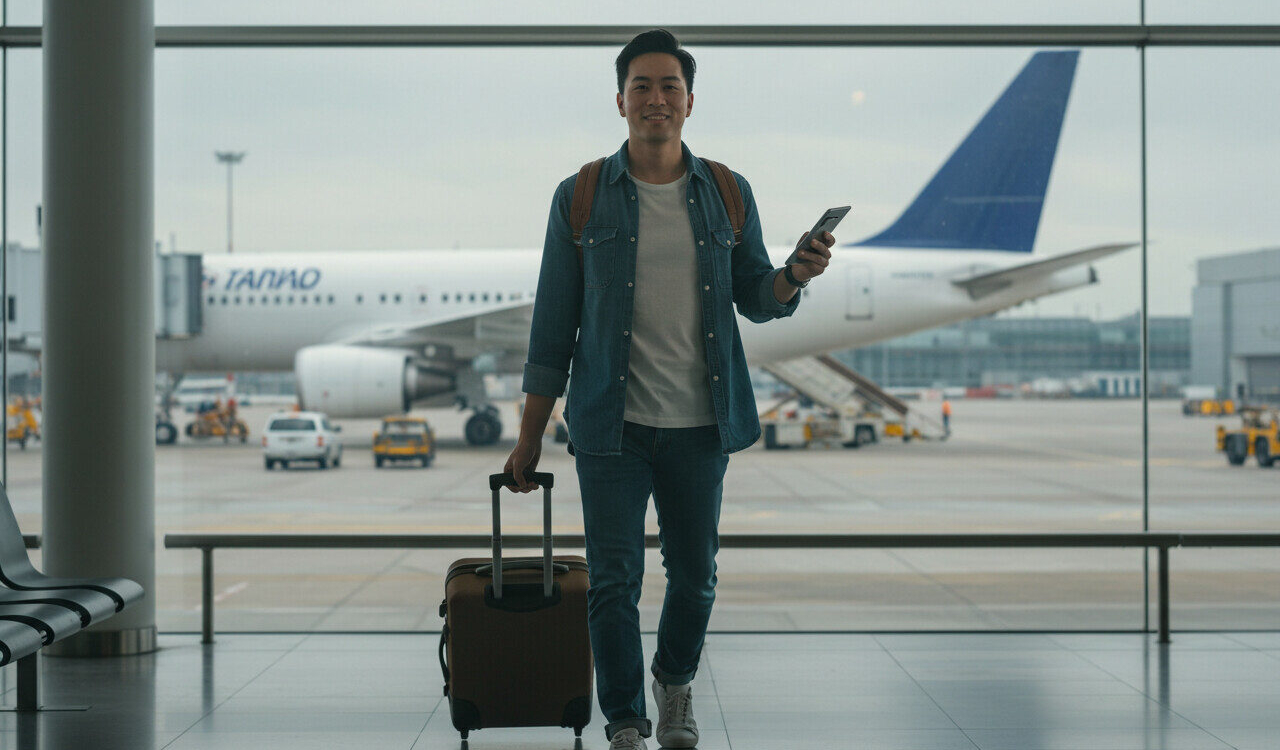Summary Highlights
- Always check your passport, visa, and ID for international flights to avoid boarding problems.
- Pack your carry-on with essentials and follow TSA liquid limits.
- Arrive early at the airport to reduce stress and handle luggage smoothly.
- Be polite to cabin crew and fellow passengers, respecting shared space.
- Avoid abrupt seat reclining and hogging armrests to keep others comfortable.
Introduction
Flying on both domestic and international flights requires awareness of airplane rules and consideration for fellow passengers. Space is limited, and sharing common areas calls for thoughtful behavior. Simple steps can improve your trip and the experience for others. Handling your bags well and sharing armrests respectfully are small but important ways to contribute. Knowing what to do and avoid helps create a more pleasant environment on the plane for everyone. The following 15 dos and don’ts aim to improve your next flight.
1. Do Check Your Passport, Visa, and Travel Documents in Advance
For international flights, ensure your passport, visa, and ID are valid. Many countries require passports to be valid for at least six months beyond your travel dates. Renew your passport if it expires soon. Submit visa applications early and confirm approval before departure. Carry extra identification and keep copies in your bag or on a device as backups. Checking these details beforehand helps avoid problems and makes travel smoother.
2. Do Pack Your Carry-On With Essentials and Follow TSA Guidelines
Include a wallet, tablet, headphones, snacks, passport, and ID in your carry-on for easy access. Follow TSA rules by placing liquids in containers of 3.4 ounces or less, sealed in clear bags. Avoid prohibited items to speed through security. A quick checklist:
Carry-On Checklist
- Electronics: Laptop, charger, headphones
- Travel Essentials: Passport, ID, boarding pass
- Comfort Items: Snacks, books, medications
Packing properly ensures faster screening and a better flight experience.
3. Do Arrive at the Airport Early to Avoid Last-Minute Stress
Arrive at least three hours before international flights and one hour before domestic flights. Early arrival helps avoid rushing, long lines, and luggage issues. It provides extra time to resolve bag problems or lost luggage concerns. Being early improves the entire airport experience.
4. Do Respect Airline Staff and Fellow Passengers
Politeness toward cabin crew and passengers makes the flight more comfortable for everyone. Use courteous language and stay within your seat space. Calmly communicate with flight attendants if you need assistance. Kindness creates a positive atmosphere in confined spaces.
5. Do Keep Your Voice Down and Use Headphones for Entertainment
Speak quietly to avoid disturbing others who may want to rest. Use headphones when listening to music or watching videos. Noise-canceling headphones enhance your experience and minimize background noise, benefiting all passengers.
6. Do Share Overhead Bin Space Politely
Place carry-on bags in bins above your row to help others find space. Avoid overpacking to leave room for fellow travelers. Use under-seat storage for smaller items. If bins fill quickly, ask cabin staff for guidance.
7. Do Practice Patience During Boarding and Disembarking
Wait for your boarding group and avoid rushing on or off the plane. Allow others to pass when collecting luggage and offer help if needed. Patience improves flow and reduces stress for everyone.
8. Don’t Bring Prohibited Items or Liquids Over the Limit
Follow TSA rules strictly. Do not carry liquids over 3.4 ounces or banned items like large batteries or sharp objects. Ignoring these can cause delays or confiscations.
9. Don’t Recline Your Seat Abruptly Without Checking Behind You
Check behind your seat before reclining to avoid spilling drinks or inconveniencing others. Recline slowly and, if possible, ask the person behind if it is okay.
10. Don’t Take Off Your Shoes or Put Feet on Seats or Armrests
Keep shoes or socks on to maintain cleanliness and respect for others. Feet on seats or armrests are uncomfortable and unsanitary for nearby passengers.
11. Don’t Hog Both Armrests if You’re Not in the Middle Seat
The middle seat occupant deserves both armrests due to limited space. Window and aisle seat passengers should only use their side’s armrest.
12. Don’t Ignore Safety Demonstrations and Instructions
Pay attention to safety briefings, even on familiar routes. Each aircraft may have different emergency procedures important to know.
13. Don’t Leave Trash or Belongings Behind on the Plane
Before leaving, check your seat and overhead bins for personal items and trash. Leaving behind messes causes extra work and delays.
14. Don’t Have Loud Conversations or Phone Calls During the Flight
Keep voices moderate. Loud talking or calls can disturb others trying to rest or focus.
15. Don’t Ask Other Passengers to Switch Seats Unless Necessary
Avoid requesting seat changes unless required. If needed, consult cabin crew for assistance and offer fair trade-offs if possible.
Conclusion
Following simple dos and don’ts when flying benefits passengers and airline staff alike. Being prepared with documents, patient during boarding, and polite throughout the journey helps everyone enjoy a smoother trip. Small actions create a respectful environment that improves the flying experience for all.
Frequently Asked Questions
What items are not allowed in a carry-on bag?
Liquids over 3.4 ounces, large batteries, flammable items, and sharp objects like box cutters are prohibited. Consult TSA guidelines regularly for updates.
Who gets the middle armrest on a three-seat row?
The middle seat passenger should have both armrests due to limited space. Window and aisle passengers use one armrest each.
Is it rude to recline your seat on a flight?
Reclining is acceptable if done slowly and with awareness. Always check behind you and, if possible, ask the person next to you.
How early should I arrive at the airport for domestic flights?
Arriving one hour before a domestic flight allows time for check-in, security, and unexpected issues.
Written by Sarah Newcomb Updated by Albert Fang
Source Citation References:
+ Inspo
There are no additional citations or references to note for this article at this time.
